Civilization III: Play the World Preview
The expansion pack to one of last year's greatest strategy games is almost upon us. Read our impressions of an early build of Play the World for more details.
About one year ago, the great game of Civilization was updated with enhanced features and graphics for its third installment. Yet, the designers felt that there were a few details and excellent ideas that could have made the game even better but that failed to make it into the release of the original Civilization III. So naturally, Infogrames and Firaxis started work on an expansion pack that would add even more gameplay to the full game. The result is the add-on, Play the World, which should hit store shelves within a few weeks.
Civilization III: Play the World is a well-stocked expansion pack that offers plenty of added gameplay to the original game. An enhanced interface, a streamlined espionage system, new units, new technologies and improvements, additional victory conditions, and new civilizations are among the many new features in Play the World. But the biggest addition to Civ III delivered by the expansion pack is multiplayer gameplay. Apparently, the precedent was set with CivNet many years ago to always add multiplayer support after a Civilization game ships and always in an expansion pack; never in the original game. In all seriousness though, it is a welcome feature and well supported. Civilization games will always be time-consuming marathons, but there are Civ fans who relish the thought of beating up on their friends and family, and Play the World lets you do that.
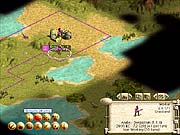
While the expansion pack offers no real graphical improvements to Civilization III, you will notice a few changes as soon as you boot up a new game. Aside from the new interface, once a game starts, you'll see enhancements to the graphical user interface. Militaristic players will appreciate the new ability to move units in a stack, allowing coordinate army movement. Using this order creates a "go to" order for all units in a square. You can also move units of a type so that you needn't hobble horsemen, for example, by moving them with spearmen.
Previously, the common orders for all units, such as disband and go to, were displayed at the bottom of your screen, but orders unique to a unit, such as build a city for settlers or the various functions of the worker, weren't. You had to press the hotkey to access those tasks. This isn't too much of a problem for Civ veterans, but it didn't take into account new players who would have to fumble for their manuals to find the hotkeys each time they wanted to irrigate a square or build a mine. Now, all these special commands are displayed as buttons above the common suite of options. For workers, the orders displayed fluctuate depending on the terrain they are standing on. If a worker is on a mountain, he gets the build mine button, but not the irrigate button, and when he steps onto a plains square, the build mine button goes away to be replaced by an irrigate button. The hotkeys still work, but at least now all the orders are displayed for easy mouse access and as a guide for those who don't know the hotkeys. Even better, when you mouse over a command, you are now told how long a task will take, such as how many turns it will take your worker to clear a forest or build a road over a mountain.
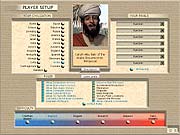
Other interface enhancements are a combined screen for espionage and diplomacy, which you can access by hitting the hotkey E; hotkeys for moving units in a stack and moving units of a type; and new hotkeys for the new commands in the game. Some of those new commands include automatic bombardment for artillery units and bombing for planes. Rally points have also been added to the game (curiously they were in previous Civ games but left out of Civ III), which let you automate sending newly created units to far-off regions.
It's Good to be the King
At game setup, you'll notice a few other changes as well. Now you have the option to turn off barbarians entirely, which will also disable goodie huts. There are also several new victory conditions and game states. You can accelerate production now, which doubles your city production, enabling your people to generate twice the food, shields, and commerce per turn. This greatly increases your city growth rate, production times, and research speed. This state is ideal for multiplayer games, as it makes things go by a lot quicker, and it will probably be the default setting for multiplay when the game ships. Another new setup option is "allow for cultural conversions," which basically allows you to annex rival cities within your sphere of cultural influence if you have a much higher cultural rating than your rival. It's a new and peaceful way to conquer enemy cities. The new victory conditions include elimination, regicide, mass regicide, victory point location, and capture the princess.
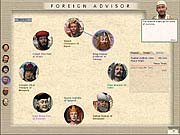
Many of the new victory conditions are here to create speedy Civ III multiplayer games. When you select elimination, for example, if you lose even a single city, you are out of the game. Regicide gives you a "king" unit that can move about the map. When he is killed, you are tossed out of the game. Mass regicide is similar, but it gives you several kings so that the game lasts longer. The final two new conditions are points-based. If you play victory point location, then each capitalhas a point value, and if you occupy and hold it, you accumulate points per turn. If you select capture the princess, you get points for capturing an enemy princess and returning her to your capital. In the princess version, the princess herself is a unit, but she is helpless and can't move. Victory is determined by tallying points at the end of the game.
Many of these options are designed specifically with multiplayer gaming in mind. Play The World offers a full suite of multiplayer options. You can play over the Internet with GameSpy Arcade. In addition, there is support for LAN games, hot-seat games, and play-by-email games. Adding to the multiplayer support is the ability to chat with other human players, as well as support for Microsoft's DirectVoice for voice chat if you have the proper equipment. When you create a multiplayer game, in addition to choosing victory conditions, you also specify the turn-based nature of the game. You can have traditional turns, timed turns, or turnless games. Turnless games simply reset the movement and resource-collection phases automatically and simultaneously for each player after a set time rather than counting down to an end-turn message. Naturally, the altered turn states are only available for Internet or LAN games. With the new victory conditions, accelerated production, and turn settings, multiplayer games in theory need not take weeks to complete anymore and can have a lot more variety now.
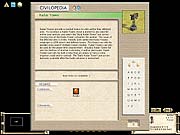
For those waiting for substantial gameplay improvements, though, there is plenty to look forward to. There are new units, new options for the worker, and new improvements. There is also a new wonder of the world. The two new units that every civ can build are guerrillas and medieval infantry. Guerrillas have good offense and defense, with attack and defense six, and movement one. They become available in the Industrial Age once you research replaceable parts. Medieval infantry are high-offense troops available in the Middle Ages with the discovery of feudalism. They have four attack, two defense, and one movement. They require iron to be built. In addition, each of the eight new civilizations has a unique unit.
Surfing the Net?
The new civilizations are the Arabs, Carthaginians, Celts, Koreans, Mongols, Ottomans, Spanish, and Vikings. The Arabs are expansionist and religious, and their unique unit is the ansar warrior, a replacement for the knight with less defensive strength, lower cost, and faster movement. The Carthaginians are commercial and industrious and have the numidian mercenary unit, which is a spearman replacement. It has better offense but is more expensive. The Celts are militaristic and religious, and their unique unit, their faster gallic swordsman, replaces the regular swordsman. Koreans are commercial and scientific, and their hwach'a is more powerful and less costly than the regular cannon it replaces. The Mongols are expansionist and militaristic, and they replace the knight with the much cheaper but less defensive keshik. The Ottoman tribe, meanwhile, is industrious and scientific and offers the sipahi unit, which replaces cavalry. The Spanish are commercial and religious. The conquistador is their unique unit, and it adds to the Spanish arsenal rather than replacing any unit. Conquistadors are cheaper than cavalry and less powerful, and they treat all terrain as roads. Finally, the Vikings are militaristic and expansionist. Their unique unit is the berserk, which replaces the longbowman. They are much stronger offensively and defensively than longbowmen, and they can also make amphibious attacks.
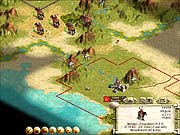
New improvements in the game include civil defense, which adds a defensive bonus to your city units against bombardment attacks; commercial dock, which is similar to the harbor but adds bonus commerce to each sea square; and the stock exchange, which increases tax revenue in each city that builds one. You now must build five stock exchanges instead of five banks before you can build the Wall Street wonder. The lone new wonder in Play the World is the Internet, which gives the benefits of a research lab in every city you own. It becomes available to build once you discover miniaturization.
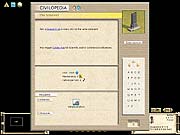
Along with the all the other new features in Play The World, there are now new building options for the stalwart worker. You can now build three new structures: the outpost, airfield, and radar tower. The outpost is available in the very early game and is simply a tower that provides sight in an area. It has no other function than to illuminate the fog of war. Its sight range increases as you place it on higher-elevation terrain. The airfield is a base you construct on the land that allows any friendly aircraft to refuel. You need to research flight before you can build it. The radar tower is actually a military structure--it gives an attack and defense bonus to any nearby friendly units. It can be built once you discover radar.
As was customary with previous Civilization expansions, there are also numerous new scenarios, including many fan-created ones. These new scenarios are simply icing on the cake for what is shaping up to be an amply stocked add-on pack. While many of the new features appear to be features that were in previous Civilization games and failed to make it into the release of Civilization III (such as the stock exchange, rally points, and airfields), all the enhancements make this already great game even better. The interface improvements will be especially welcome to players, as will the new civilizations. Multiplayer gameplay is of course the biggest draw of the expansion pack, and with the new victory conditions and adjustable game settings, there will be ample opportunity for fun and fast Civilization III play for local or Internet play.
Got a news tip or want to contact us directly? Email news@gamespot.com
Join the conversation